Entry Database : PDB / ID : 2i0jTitle Benzopyrans are Selective Estrogen Receptor beta Agonists (SERBAs) with Novel Activity in Models of Benign Prostatic Hyperplasia Estrogen receptor alpha Keywords / Function / homology Function Domain/homology Component
/ / / / / / / / / / / / / / / / / / / / / / / / / / / / / / / / / / / / / / / / / / / / / / / / / / / / / / / / / / / / / / / / / / / / / / / / / / / / / / / / / / / / / / / / / / / / / / / / / / / / / / / / / / / / / / / / / / / / / / / / / / / / / / / / / / / / / / Biological species Homo sapiens (human)Method / / / Resolution : 2.9 Å Authors Wang, Y. Journal : J.Med.Chem. / Year : 2006Title : Benzopyrans are selective estrogen receptor Beta agonists with novel activity in models of benign prostatic hyperplasia.Authors: Norman, B.H. / Dodge, J.A. / Richardson, T.I. / Borromeo, P.S. / Lugar, C.W. / Jones, S.A. / Chen, K. / Wang, Y. / Durst, G.L. / Barr, R.J. / Montrose-Rafizadeh, C. / Osborne, H.E. / Amos, R. ... Authors : Norman, B.H. / Dodge, J.A. / Richardson, T.I. / Borromeo, P.S. / Lugar, C.W. / Jones, S.A. / Chen, K. / Wang, Y. / Durst, G.L. / Barr, R.J. / Montrose-Rafizadeh, C. / Osborne, H.E. / Amos, R.M. / Guo, S. / Boodhoo, A. / Krishnan, V. History Deposition Aug 10, 2006 Deposition site / Processing site Revision 1.0 Oct 24, 2006 Provider / Type Revision 1.1 May 1, 2008 Group Revision 1.2 Jul 13, 2011 Group Revision 1.3 Oct 18, 2017 Group / Category Item _software.classification / _software.contact_author ... _software.classification / _software.contact_author / _software.contact_author_email / _software.date / _software.language / _software.location / _software.name / _software.type / _software.version Revision 1.4 Oct 20, 2021 Group / Derived calculations / Category / struct_ref_seq_dif / struct_siteItem _database_2.pdbx_DOI / _database_2.pdbx_database_accession ... _database_2.pdbx_DOI / _database_2.pdbx_database_accession / _struct_ref_seq_dif.details / _struct_site.pdbx_auth_asym_id / _struct_site.pdbx_auth_comp_id / _struct_site.pdbx_auth_seq_id Revision 1.5 Aug 30, 2023 Group / Refinement descriptionCategory / chem_comp_bond / pdbx_initial_refinement_model
Show all Show less
 Yorodumi
Yorodumi Open data
Open data Basic information
Basic information Components
Components Keywords
Keywords Function and homology information
Function and homology information Homo sapiens (human)
Homo sapiens (human) X-RAY DIFFRACTION /
X-RAY DIFFRACTION /  SYNCHROTRON /
SYNCHROTRON /  MOLECULAR REPLACEMENT / Resolution: 2.9 Å
MOLECULAR REPLACEMENT / Resolution: 2.9 Å  Authors
Authors Citation
Citation Journal: J.Med.Chem. / Year: 2006
Journal: J.Med.Chem. / Year: 2006 Structure visualization
Structure visualization Molmil
Molmil Jmol/JSmol
Jmol/JSmol Downloads & links
Downloads & links Download
Download 2i0j.cif.gz
2i0j.cif.gz PDBx/mmCIF format
PDBx/mmCIF format pdb2i0j.ent.gz
pdb2i0j.ent.gz PDB format
PDB format 2i0j.json.gz
2i0j.json.gz PDBx/mmJSON format
PDBx/mmJSON format Other downloads
Other downloads 2i0j_validation.pdf.gz
2i0j_validation.pdf.gz wwPDB validaton report
wwPDB validaton report 2i0j_full_validation.pdf.gz
2i0j_full_validation.pdf.gz 2i0j_validation.xml.gz
2i0j_validation.xml.gz 2i0j_validation.cif.gz
2i0j_validation.cif.gz https://data.pdbj.org/pub/pdb/validation_reports/i0/2i0j
https://data.pdbj.org/pub/pdb/validation_reports/i0/2i0j ftp://data.pdbj.org/pub/pdb/validation_reports/i0/2i0j
ftp://data.pdbj.org/pub/pdb/validation_reports/i0/2i0j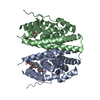
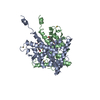
 Links
Links Assembly
Assembly
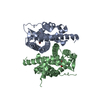
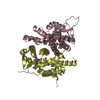
 Components
Components Homo sapiens (human) / Gene: ESR1, ESR, NR3A1 / Plasmid: pET19 / Species (production host): Escherichia coli / Production host:
Homo sapiens (human) / Gene: ESR1, ESR, NR3A1 / Plasmid: pET19 / Species (production host): Escherichia coli / Production host: 
 X-RAY DIFFRACTION / Number of used crystals: 1
X-RAY DIFFRACTION / Number of used crystals: 1  Sample preparation
Sample preparation SYNCHROTRON / Site:
SYNCHROTRON / Site:  APS
APS  / Beamline: 17-BM / Wavelength: 1 Å
/ Beamline: 17-BM / Wavelength: 1 Å Processing
Processing MOLECULAR REPLACEMENT
MOLECULAR REPLACEMENT Movie
Movie Controller
Controller


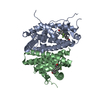
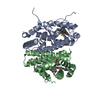
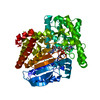



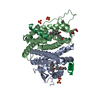
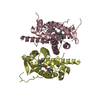
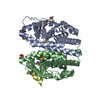

 PDBj
PDBj






